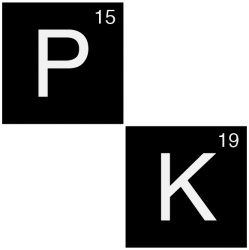Digoxin pharmacokinetic parameters
| Oral bioavailability (F) | 70% |
| Clearance (CL) | 6 L/h |
| Volume of Distribution (Vd) | 400 L |
| Half-life (t1/2) | 40 h |
Description
Digoxin is used in several cardiac pathologies such as atrial fibrillation and heart failure. By its positive inotropic effect, digoxin increases the cardiac muscular force of contraction. At the same time, digoxin has a negative chronotropic effect that decreases heart rate by its influence on the cardiac electrical conduction pathway.
Digoxin is well absorbed in the gastrointestinal intestinal tract, and there is no massive hepatic first pass effect. Digoxin’s oral bioavailability remains usually high (70%-80%), even though considerable metabolism of digoxin within the gastrointestinal tract may occur in some patients by hydrolysis in the acidic environment of the stomach or by digestion by intestinal bacteria. Therefore, when such a patient is placed on a broad spectrum antibiotic that eliminates many of the intestinal bacteria, the bioavailability of digoxin may suddenly increase.
Digoxin has a large volume of distribution, due to its high affinity for skeletal and cardiac muscles, intestines and kidney. Digoxin has a distinct distribution phase, which lasts 6-8 hours and thus its disposition is best described by a two-compartment pharmacokinetic model. Adipose tissue is not a reservoir for digoxin; therefore, dosing should be based on the estimated lean body mass. This is often a source of confusion and inappropriate dosing. Binding to plasma proteins, mostly albumin, averages 20 to 30%. Digoxin incompletely distributes across the placental barrier.
Most of the digoxin is eliminated unchanged by the kidneys. Renal clearance of digoxin exceeds the glomerular filtration rate of its free fraction, thus indicating a tubular secretion component. Tubular secretion is mediated by the multidrug active transporter, p-glycoprotein. This p-glycoprotein may be inhibited by spironolactone, quinidine, verapamil and amiodarone. Renal failure also decreases the clearance of digoxin, and may cause accumulation to toxic levels if dosage is not adapted thoroughly. A small fraction of digoxin is metabolized by the liver and approximately 8% undergoes an enterohepatic cycle. The elimination half-life of digoxin is long. Therefore, in the absence of a loading dose, the time required to reach steady state, after the initiation of a repeated administration regimen, is around 5 to 7 days.
The therapeutic index of digoxin is very narrow. Severe toxic effects, such as cardiac arrhythmias (e.g. bradycardia, heart block, ventricular arrhythmias), may occur at plasma concentrations only twice the therapeutic plasma concentration range.
Chart Pharmacokinetics
Clinical implications
Usually a loading dose is administered at the beginning of a long- term therapy. This dose is administered in fractionated amounts over one day, in order to reach therapeutic concentrations rapidly avoiding as much as possible toxic peak plasma concentrations. In the absence of renal failure, the loading dose is taken as 3-4 times the maintenance dose.
Due to its narrow therapeutic index and the readily available methods to measure its plasma concentration, digoxin is a very good candidate for therapeutic drug monitoring (TDM). Therefore, TDM is widely used to adapt individual digoxin dosage regimens. In order to evaluate the steady state concentration, the plasma concentration should be measured 5 to 7 days after initiation or dosage modification of a repeated administration regimen. The blood sample must be drawn at least 8 h after the last dose, so that the concentration reflects the elimination phase and the tissular impregnation. The therapeutic interval for through concentration is 0.8 to 2 microgram/L.
Since most of the digoxin is excreted unchanged in the urine, patients with renal impairment (e.g. elderly patients) are initially given lower doses of digoxin. Thereafter, dosage is further adapted to the individual according to TDM.

